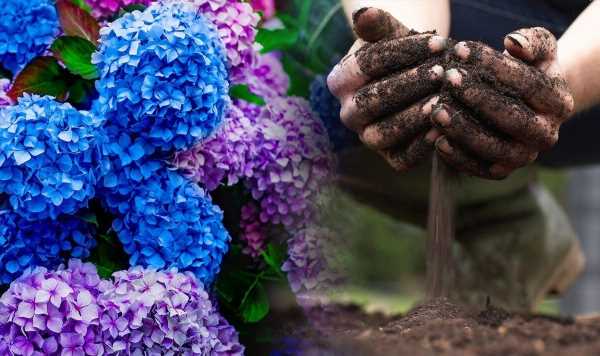Gardeners’ World: Monty Don on growing hydrangeas
We use your sign-up to provide content in ways you’ve consented to and to improve our understanding of you. This may include adverts from us and 3rd parties based on our understanding. You can unsubscribe at any time. More info
Hydrangeas are a type of garden flowering plant that can grow up to three metres tall in full bloom. But that relies on your plant having the best quality soil available, to help it thrive. It’s vital that you monitor your hydrangea’s soil throughout the season.
There are between 70 and 75 different species of hydrangeas, found from the Americas all the way to Asia.
Its name comes from the Greek for ‘water vessel’, owing to its unusual seed capsule shape.
Your hydrangeas may start to flower in the early spring, and they should last until the late autumn.
But, if they don’t have the right soil, you might be a little underwhelmed with the result.

If you decide to grow some hydrangeas this summer, you should plant them in moist, well-drained soil, according to Gardeners’ World.
Aim for a patch of soil that gets sunlight, but isn’t exposed to the sun all day long.
Very dry soil is the worst place for your hydrangeas, as it needs plenty of water.
Don’t forget that the acidity of the soil will have an impact on the colour of your blooms.
“Hydrangeas do best in moist, well-drained soil and dappled shade – not too sunny and not too shady,” it said.
“Avoid south-facing positions, especially if the soil is very dry. The young growth is prone to frost damage in spring, so avoid planting in a frost pocket and plant away from strong winds.
“Hydrangeas will thrive in most soil types, including alkaline and acidic soil. However, the pH of the soil will change the colour of the flowers of some varieties.
“Some plants that usually offer pink flowers will appear blue if the soil is acidic.”
DON’T MISS
Woman smashes into garden wall, car left hanging over edge [LATEST]
‘They won’t come back’: How to remove dandelions from lawns [ANALYSIS]
Queen cancels summer appearances – What major events has Queen missed? [EXPLAINER]

If your soil is particularly dry, you could try adding some moisture-retaining organic matter to make it an ideal growing space.
It’s best to add manure or compost before planting your hydrangeas, however.
Keep your plant well-watered throughout its first few seasons to help it get used to its new environment.
When you do water your hydrangeas, you should try to water in a well, as opposed to dumping it on top of the leaves and waiting for it to filter down.
Dead-heading your hydrangeas can play an integral role to the health of your shrub.
The best time to start pruning your hydrangeas is in the early spring – ahead of the growing season – and in the late winter.
If you have climbing hydrangeas, you can leave the pruning for later in the summer, after they start to flower.
You can leave the dead heads on your hydrangeas throughout the winter, as they’ll provide some frost protection for the new growths below.
Source: Read Full Article
